Cover Your REAR
Maintaining a robust communication program is a tall order for associations, especially for the half that feel they’re understaffed.
But knowing which media types are the most effective is as simple as covering your REAR: Relevancy, Engagement, and Revenue. These three guideposts should direct your association’s communication strategies because they all have a direct impact on the health of your communications. Are members paying attention? Are they interacting with our resources and advertisers? Are we maximizing the advertiser value of our communications, and thus the amount of non-dues revenue with which we can supplement our overall budget?
Our team came up with a guessing game to briefly introduce and explain nine communication channels that can help associations excel in these three areas. Ready to play?
Relevance
This is the starting point for most associations when thinking about how to improve their member communications. If no one’s paying attention to your publications, something is seriously wrong. Bad design or user experience aside, lack of relevancy is one of the reasons members stop paying attention.
However, there are three types of member communication that will likely never go out of style. The first is just one word although it combines two words that both connote sharing current events:
Newsletter
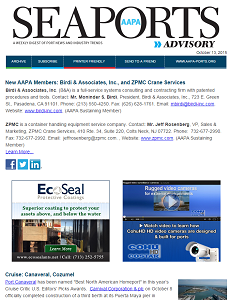
Newsletters are something almost all associations frequently use to communicate with members. In addition to consuming news, association members use newsletters as training materials for new hires, or as a reference library for regulatory/specialized topics.
However, traditional newsletters aren’t always as effective at getting members to take action as association staffs would like. With the help of artificial intelligence, associations can greatly improve the relevance of the content they deliver to individual members while retaining control over newsletter themes and content sources. AI-powered newsletters boast open rates up to three times higher than traditional newsletters, and become more personal over time as readers demonstrate interest in different topics through their clicks and views.
Now for a second popular communication type. What medium is listened to by twice as many people who regularly watch NFL Sunday Night Football?
Podcasts!
 More than 51% of American adults have listened to a podcast at least once; 32% have listened to one in the last month.
More than 51% of American adults have listened to a podcast at least once; 32% have listened to one in the last month.
Podcasts are becoming such a valued way of reaching people that Spotify paid about $340 million in February 2019 to purchase Gimlet and Anchor, two podcasting platforms. Why? They want to stay relevant to listeners. Now in addition to music, Spotify can apply their content-suggesting algorithm to podcasts. This can help keep listeners on the Spotify platform longer, which in turn will create more value for their advertisers. More engagement under one “roof” leads to more revenue!
Your association should be modeling this behavior, too, by using multiple integrated communication channels to engage members longer and more frequently with content that speaks to their professional information needs. The American Bankers Association and the National Retail Federation both produce regular podcasts to educate members about industry trends, share case studies, explain new technology or a specialized area of operations that the listener might not be familiar with. They earn revenue from their podcasts by selling episode sponsorships and digital space on episode web pages and descriptions.
Shifting gears to another area of association resources. Two words, three letters in the first word: Something everyone has if they need a paycheck. Second word: Something associations play a pivotal role in doing with all kinds of information. Give up?
Job Distribution
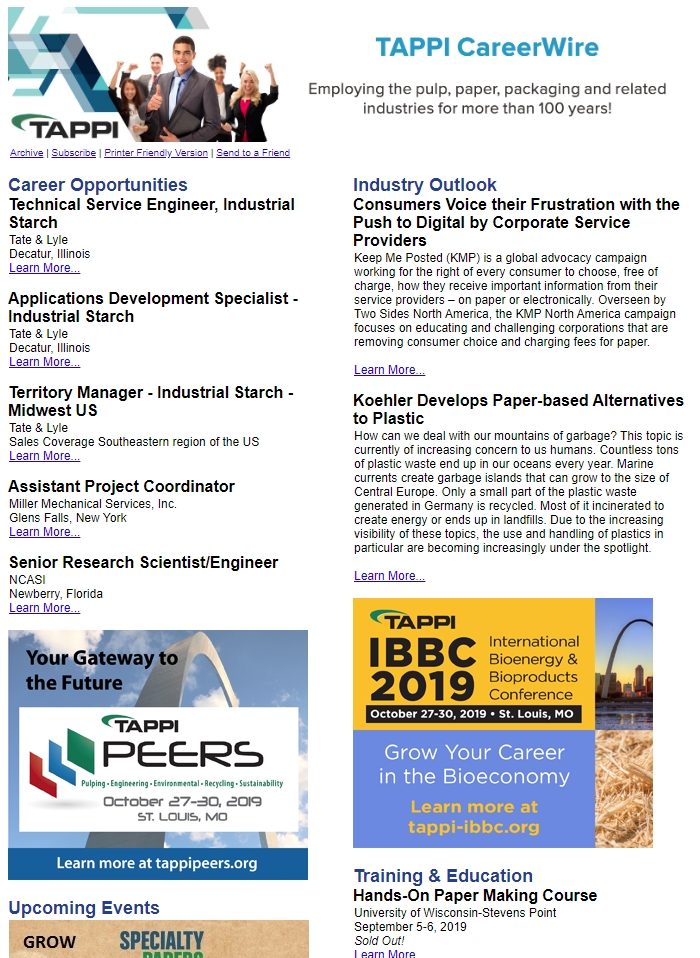
Getting the right jobs in front of qualified job candidates is key to delivering a meaningful online job search experience. It’s important that members feel like job postings are curated specifically for them. Employers and recruiters want to know that they’re going to get a return on the money they invest in posting a job opportunity through relevant, quality candidates applying.
The recruitment space has not been ignored by the AI and machine learning innovators, either. New machine learning capabilities aid employers with the creation of more accurate listings that speak better to potentially interested candidates during the job posting process – making them more relevant to all qualified candidates. Advanced automation algorithms ensure that jobs distributed to external networks draw the right candidates back to an association’s website to deliver relevant applicants to their employer partners.
Engagement
The “E” in “REAR” stands for engagement. These are communication tools that are more interactive than a standard publication. They provide a wealth of information but only when the member interacts with them – a “choose your own adventure” type of resource. Engaging communications don’t necessarily see as widespread adoption as more passive communications like newsletters or magazines, but for those who decide to take advantage of them, they often become indispensable resources that more than justify the price of membership.
First up is a resource that might have shown up as a big book on your doorstep a couple times per year. Now, this two-word resource is hosted online and is sometimes called a “shopping guide” in the B2C world:
Buyers’ Guide
All members need products and services to help run their businesses, but not all members have the time to track down individual vendors. A huge opportunity for associations to engage members in their search for reputable suppliers is to provide an online buyers’ guide. Most people know of online buyers’ guides as modern-day Yellow Pages. However, many in the association space have been searching for something more out of this product. Some providers are now offering live dynamic search capability, interactive functionality and content-rich vendor profiles, combining the usefulness of a directory and the value of industry expertise that help members identify reputable vendors in less time and with more options.
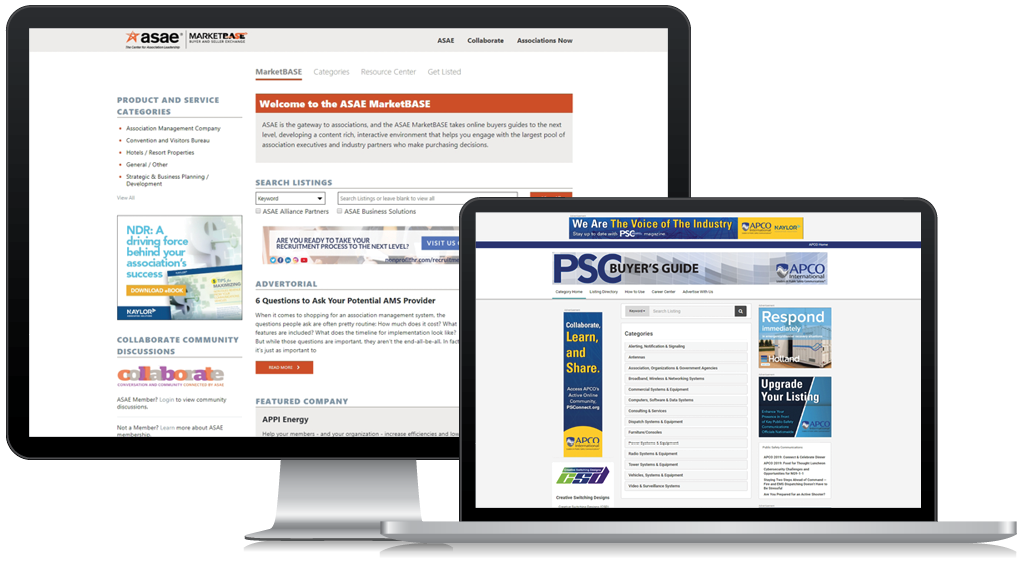
These updated buyers’ guide formats also offer space for suppliers to post expanded text, images, videos and other paid content marketing pieces that engage members while showing off their industry expertise. Add in extras like the ability to solicit project bids from multiple potential suppliers, maps, and showcase spaces that let suppliers position their business as trusted and reliable, and you’re well on your way to proving membership value while earning non-dues revenue from suppliers wanting to participate.
Next up under “engagement:” What two words describe the professional journey we all carve out for ourselves over our working years?
Career Path
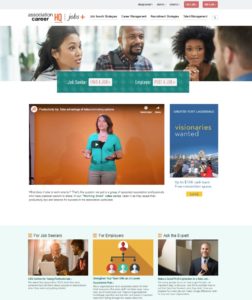
Associations often discover that their job boards are the 2nd or 3rd most-visited pages on their website. That creates a big opportunity to drive deeper engagement with an audience that’s clearly seeking help advancing their career path. There’s a wide variety of tools and capabilities available to help associations meet this need, such as online career assessments, digital credentialing systems and private social networks. By integrating elements of these programs into a job board, associations have an opportunity to create more meaningful engagement through their online career centers.
Our next term is a riddle: What fits in the palm of your hand but contains as much information as a bulletin board?
Conference Apps
Although conference apps are no longer considered the cool, new event offering but an expected tool for tech-savvy attendees to use, they’re a great opportunity to drive more event engagement and earn non-dues revenue. Conference apps keep event attendees on track by providing your event schedule, discussion boards, venue maps, and exhibitor directories in one place on one device most people have with them at all times: Their smartphone. Conference apps can help attendees connect with each other before the event so that when they arrive, they already recognize some familiar faces. These apps often come with the ability for your staff to send push notifications (text messages or alerts) about last-minute room changes or weather updates that may affect outdoor activities. Features like these improve the overall event experience at little time or monetary cost to your association.
Furthermore, conference app advertising offers vendor sponsorship opportunities that generate additional non-dues revenue for your association.
Revenue
Our first revenue-related term is a two-word term that combines the abbreviated term for “advertising” with the active tense of a big-box store name known for its red and white logo. Any guesses?
Ad Targeting
A perennial challenge reported by association professionals who take part in our annual Association Communications Benchmarking Study is cutting through information clutter. Family life, job demands, personal hobbies and general news all compete for your members’ time. Getting members to pay attention to the useful content in your member communication can be difficult.

Ad targeting, sometimes called retargeting, is the ability to reach your audience after they leave your website through targeted, relevant ads. Re-reaching your audience with the same information they may have read once on your website (but soon forgotten) enables your association to stay relevant with members while earning revenue from advertisers. In addition, retargeting increases the value advertisers assign to your website because they can reach your site visitors with their message without being limited by the number of page views your website earns. Website visitors who are retargeted with timely display ads are 70 percent more likely to convert on your website. For your association, that could mean more event registrants, mentoring participants, volunteers or members. For your advertisers, this means a more effective ad buy and more investment with your association.
Now for our next term. If you’ve seen the 2014 movie “Enigma,” tell us: What did the British use to crack coded German telegraphs and turn the tide on World War II?
Machine Learning
“Machine Learning” can sound like something out of “2001: A Space Odyssey” or “1984,” but its applications in association life are nothing to shrink away from. Machine learning is a computer using algorithms and statistical models to crunch repetitive data and learn from it. The end goal can be anything: Predict trends, learn a new language, learn to win at a game or, like the British, to crack an otherwise impenetrable code. Machines have learned how to play chess, how to compete on Jeopardy, and how to negotiate. Machine learning’s close relative, artificial intelligence (AI),
Your association might use machine learning/AI to:
- Predict how successful a membership drive/recruitment effort might be
- Predict event attendance
- Estimate how many members will renew in a given year
- Customize info in an eNewsletter
- Customize membership recruitment efforts to speak to the most important professional needs of an individual

Some of these applications offer opportunities for increased engagement or relevance, too. Machine learning platforms can process data such as newsletter click rates to tell you which types of articles interest your members the most – and thus which content areas your staff should focus on more.
One more term before we end this game. If your association wants to earn more non-dues revenue, you better bring your “A,” as in “Advertising,” game. However, there’s a subset of advertising that is proving more effective for associations than standard display ads. Which “C” game are we talking about?
Content Marketing
We all know about traditional advertising: TV ads, radio spots, billboards, and relatively newer forms of advertising such as display or search ads. But despite the plethora of advertising that surrounds us, content remains king. And relevant, engaging content that earns the eyeballs that translate into advertiser value is no longer just about impressions and clicks. People want to read and learn from experts before buying a product or service.
Content marketing is a highly sought after form of advertising that allows associations to leverage industry expertise to build their content/resources while bringing value to the advertiser and generating non-dues revenue. Content marketing can look like a sponsored section of a magazine, a blog post written by a supplier that promotes their product but also their vast knowledge of how it benefits the industry, or a short message in the middle of a podcast. It is meant to fit into a publication more seamlessly than a traditional display ad or pop-up.
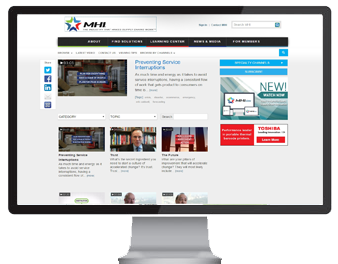
Members appreciate content marketing because in addition to referencing your association’s communications for upcoming programming info or activity recaps, they’re looking for supplier referrals, too. People enjoy supporting the businesses that support their association. When they can gain more confidence in a vendor’s ability to serve their business needs by reading/listening to that vendor share their professional knowledge, the chances of success for both parties increases.
Hopefully this game has refreshed your memory about ways to improve your association communication, or introduced you to some new ideas about how to strengthen the relevancy, engagement and revenue-earning potential of your communication portfolio.
Have we missed any communication tactics that work well for your association? Feel free to share them in the comments below!



